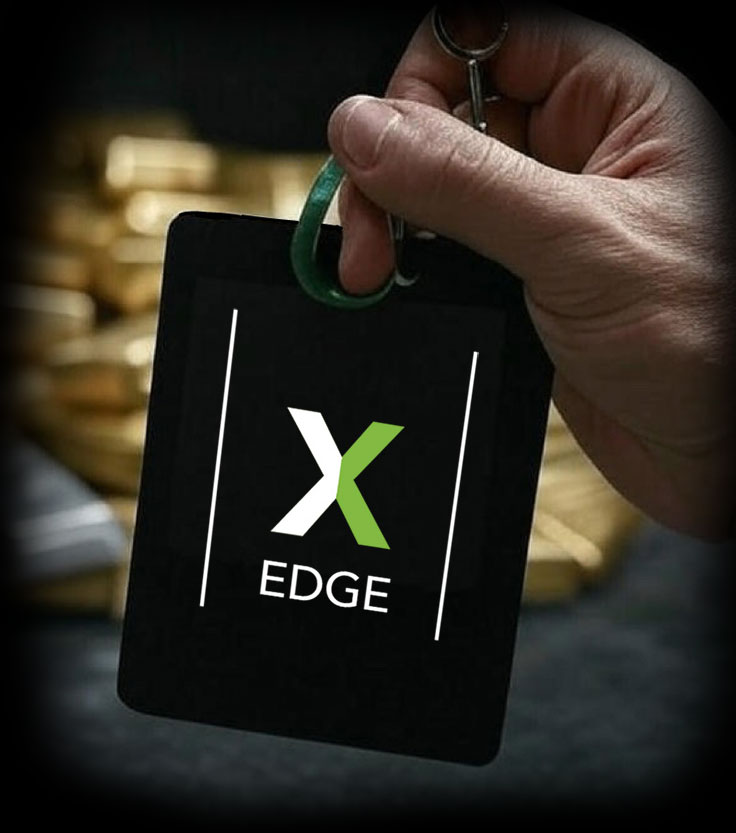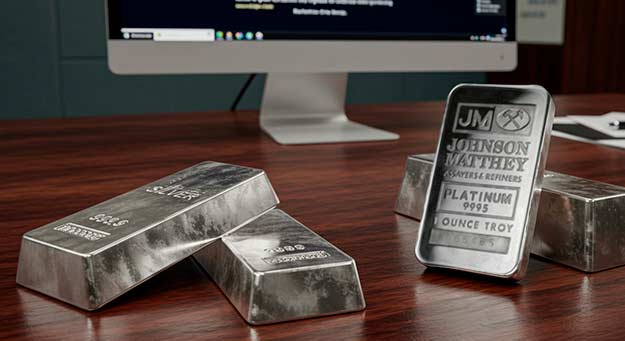Investing in precious metals has long been a strategy for those seeking stability and diversification in their portfolios. Among the metals, platinum and silver stand out for their unique qualities and investment potential. In this article, we’ll explore the dynamics of investing in platinum versus silver, delving into their market behaviors, historical performance, and their roles in jewelry, all through the lens of maximizing returns. By the end, you’ll have a clearer understanding of which metal might suit your investment strategy, especially with options like those offered by OWNx.
| Key Takeaways |
|---|
| While both silver and platinum are valuable, platinum’s unique properties in industrial sectors make it a compelling choice for diversification. |
| Silver remains a popular investment due to its lower cost and availability in the form of silver coins and bars. |
| Both metals’ role in precious metal markets and industrial applications make them highly sought-after investment metals. |
| Buying silver or platinum through OWNx enables fractional ownership of precious metals -allowing you to acquire more metal for your money. |

Start buying precious metals at cost.
Precious Metals in Investment Portfolios
Precious metals are often considered a safe haven in times of economic uncertainty, offering a hedge against inflation and currency fluctuations. Platinum and silver, while less talked about than gold, play crucial roles in diversifying investment portfolios.
Platinum is renowned for its rarity and industrial applications, particularly in the automotive industry for catalytic converters. Meanwhile, silver boasts a broad range of uses, from electronics to solar panels, making it a versatile addition to any portfolio. Investing in these metals through platforms like OWNx allows you to diversify efficiently and potentially safeguard your assets against market volatility.
Platinum vs. Silver: Market Dynamics
Understanding market dynamics is key to making informed investment decisions. Both platinum and silver have strong industrial demand, which directly impacts their prices.
Market Demand and Industrial Uses
Platinum’s demand is heavily influenced by the automotive sector, where it is used in catalytic converters to reduce emissions. This ties platinum’s value closely to the health of the automotive industry and, more recently, to the shift towards electric vehicles. Silver, on the other hand, is indispensable in technology, particularly in electronics and solar energy, where it is used for its conductivity and reflectivity.
Market Conditions and Price Trends
Industrial market conditions greatly influence the prices of platinum and silver. Platinum prices can be more volatile due to its industrial dependency, whereas silver tends to have steadier demand thanks to its broader range of applications. Platforms like OWNx offer tools to track these trends, allowing investors to make timely decisions.
Investors using OWNx can capitalize on these dynamics by monitoring industrial trends and adjusting their portfolios accordingly, ensuring that they are always aligned with the most promising opportunities in the precious metals market.
Sterling Silver vs. Pure Silver as Investments
When investing in silver, it’s essential to distinguish between sterling silver and pure silver.
Sterling Silver
Comprising 92.5% silver and 7.5% other metals (typically copper), sterling silver is popular in jewelry and tableware. Its lower silver content makes it less valuable than pure silver, but it is still a viable investment. For investors using OWNx, pure silver (bullion) can be easily obtained as an entry point into silver investing.
Pure Silver
Also known as fine silver, this metal is 99.9% pure and holds more value due to its higher silver content. Pure silver is favored by investors for its liquidity and intrinsic value. OWNx offers various ways to invest in pure silver, including coins and bullion, providing flexibility based on your investment goals.
Platinum Jewelry as an Investment
Platinum jewelry is not just a symbol of luxury but also a solid investment. Known for its durability and resistance to tarnish, platinum jewelry holds its value exceptionally well over time. Unlike other metals, platinum is dense and doesn’t wear away, meaning that even after years of use, a platinum piece remains almost as valuable as when it was first purchased.
Comparison with Silver Jewelry
While silver jewelry, particularly sterling silver, is widely popular and has investment merits, it doesn’t quite match the durability and value retention of platinum. Silver is prone to tarnishing and may require more maintenance, which can impact its resale value. However, for those looking to invest in jewelry at a lower entry cost, silver remains an accessible and attractive option.
Long-Term Value and Price Volatility
Understanding the long-term value and price volatility of platinum and silver is essential for any investor.
Historical Performance
Historically, platinum has been more volatile than silver, largely due to its dependence on the automotive industry. However, its rarity and industrial importance often drive significant price surges during economic growth periods. Silver, with its broader industrial use and steady demand, tends to offer a less volatile alternative.
The future of platinum as an investment is closely tied to the automotive industry and the ongoing transition to electric vehicles, which may reduce demand for platinum in catalytic converters. However, emerging technologies could create new industrial uses for platinum, potentially stabilizing or even boosting its value. Silver’s role in renewable energy technologies, such as solar panels, positions it well for sustained demand, making it a reliable long-term investment.
Risk and Reward Analysis
Investing in platinum and silver involves weighing the risks against the potential rewards.
Investment Risks
Platinum’s reliance on specific industries makes it more susceptible to economic shifts, leading to higher price volatility. The risk of fluctuating demand, especially with the rise of electric vehicles, adds another layer of uncertainty. Silver, though less volatile, also faces risks, particularly from market saturation and competition from other materials in industrial applications.
Potential Rewards
Despite these risks, both metals offer substantial rewards. Platinum’s rarity and its potential for new industrial applications could lead to significant price increases, especially if new technologies increase demand. Silver, with its steady demand and wide range of uses, offers a more stable investment with potential for moderate long-term gains. OWNx enables investors to capitalize on these opportunities by offering access to both metals on our platform.
Diversification Strategies
Incorporating platinum and silver into a diversified portfolio can provide a hedge against market volatility.
Balancing Investments
A balanced approach might involve allocating funds to both platinum and silver, alongside other precious metals like gold. This strategy can mitigate risks by spreading exposure across multiple assets that react differently to economic changes.
Strategic Allocation
Depending on your risk tolerance and investment goals, you might choose to allocate more to silver for its stability or to platinum for its potential high returns.

Start buying precious metals at cost.
Is Platinum a Better Investment Than Silver?
The decision of whether platinum or silver is the better investment depends on various factors, including your financial goals, risk tolerance, and market outlook.
Pros and Cons
Platinum’s potential for high returns comes with greater risk, making it suitable for investors with a higher risk appetite. Silver, while potentially offering lower returns, is sometimes less volatile, making it a better choice for more conservative investors.
Investor Suitability
If you’re looking for an investment that could deliver significant returns in the event of an industrial upswing, platinum may be the better choice. However, if you prefer a steady, reliable asset, silver might be more appropriate.
Conclusion
In conclusion, both platinum and silver present unique opportunities for investors. Both metals offer the potential for high returns, particularly if new industrial applications emerge. By understanding the market dynamics, risks, and rewards associated with each metal, you can make informed decisions that align with your financial goals.
FAQ
Platinum vs silver investments differ mainly in their market volatility, and industrial demand, with platinum often being more expensive per ounce and more volatile in price over the long term.
Platinum group metals are valuable due to their rarity, high melting point, and essential applications in industries like automotive and jewelry.
When comparing platinum vs silver, silver has higher thermal conductivity, making it more suitable for applications requiring efficient heat transfer, while platinum’s strength lies in its durability and resistance to corrosion.
